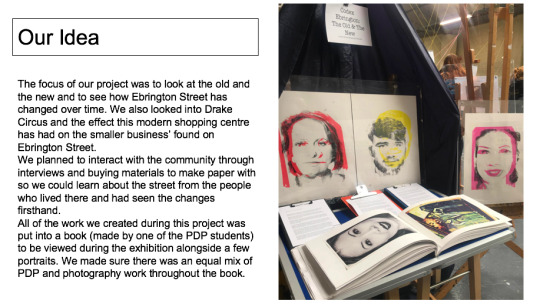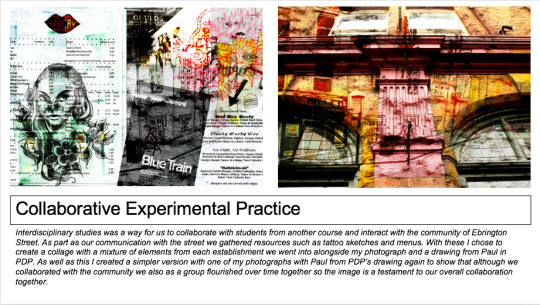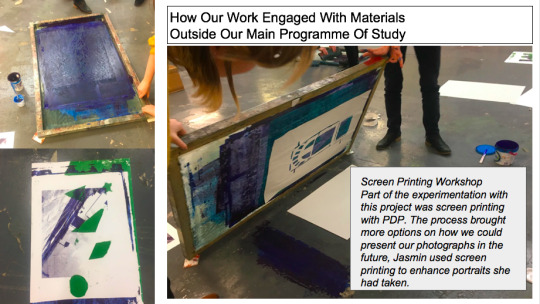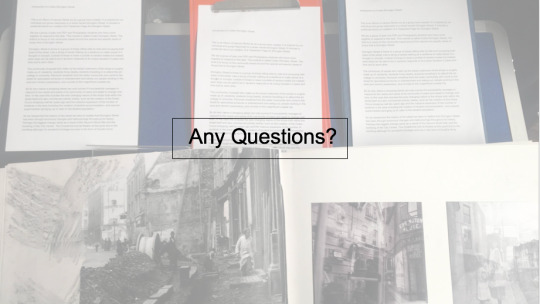#interdisciplinarystudies
Text
Social science classes provide insights into human behavior, society, and culture. From history and geography to sociology and anthropology, social science classes in Singapore offer a multidisciplinary approach to understanding the complexities of the social world.
#SocialScienceClasses#SocialScienceEducation#SocialScienceTuition#SocialScienceLearning#SocialScienceCurriculum#SocialScienceCourses#SocialScienceInstitute#SocialScienceStudies#SingaporeEducation#HumanitiesEducation#SocialScienceResearch#SocialScienceCommunity#SocialScienceAcademy#SingaporeHumanities#SocialScienceForAllAges#SocialScienceTopics#InterdisciplinaryStudies#SingaporeEducationHub#SociologyClasses#PsychologyClasses#AnthropologyClasses#PoliticalScienceClasses#GeographyClasses#EconomicsClasses#CulturalStudies#GlobalStudies#SingaporeSocialScience#UnderstandingSociety
0 notes
Text
Social Science Classes in Singapore: Delve into the complexities of human society and culture with Kiya Learning thought-provoking Social Science Classes in Singapore. From history to sociology, our courses explore various aspects of social science, encouraging students to analyze and evaluate societal issues and trends. Through discussions and research projects, students develop a deeper understanding of the world around them.
#SocialScience#SocSci#SocialStudies#SocialSciences#Sociology#Anthropology#PoliticalScience#Economics#Psychology#Geography#History#CulturalStudies#BehavioralScience#Humanities#ResearchMethods#SocialResearch#GlobalStudies#SocSciChat#SocialScienceEducation#InterdisciplinaryStudies
0 notes
Text
A Look at the Print and Material History: A Comparative Exploration of “Medieval” England and Japan
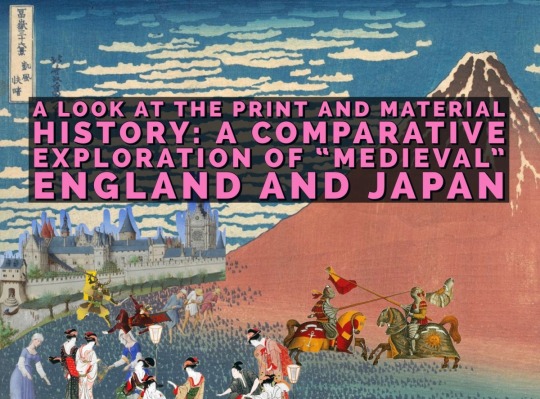
View On WordPress
#ArtisticExpressions#ArtisticHeritage#Ceramics#Craftsmanship#CulturalExchange#CulturalHeritage#CulturalTraditions#HistoricalComparisons#HistoricalResearch#IlluminatedTexts#Innovation#InterdisciplinaryStudies#KnowledgeExchange#Lacquerware#ManuscriptArt#MaterialHistory#MedievalEngland#MedievalJapan#MedievalPrintCulture#MedievalStudies#Metalwork#PrintedMaterials#PrintingPress#TextileProduction#TraditionAndInnovation#UkiyoE#VernacularLiterature#VisualArts#WoodblockPrinting#WoolTrade
0 notes
Text
BA in Public Administration – (Bachelor of Arts in Public Administration)
Bachelor of Arts in Public Administration (BA in Public Administration) is an undergraduate program that focuses on providing knowledge and skills related to public administration and management. The course lasts three years on average, while certain universities could offer a four-year degree. It is intended to prepare students for professions in government, non-profit, and for-profit businesses…

View On WordPress
#PublicAdministration#PublicPolicy#GovernmentStudies#PoliticalScience#LeadershipDevelopment#NonprofitManagement#PolicyAnalysis#CommunityDevelopment#CivicEngagement#SocialJustice#PublicService#UrbanPlanning#LocalGovernment#PolicyMaking#OrganizationalManagement#PublicFinance#StrategicPlanning#InterdisciplinaryStudies#EthicsInPublicService#GlobalGovernance
0 notes
Text
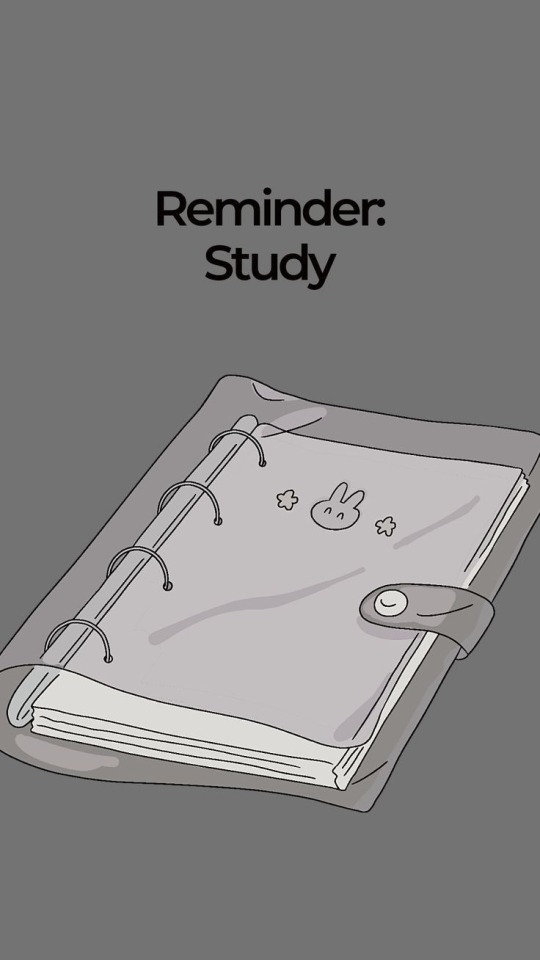
This is going to be the pinned post for this blog for me to find all my stuff!
#publicpolicy
#statistics
#psychology
#interdisciplinarystudies
#adhdstudytips
#adhdexperiments
#lawstudies
1 note
·
View note
Text

How Should Christian Scholars Respond to Attacks and Insults?
By Bible Researcher and Author Eli Kittim 🎓
Now these people were more noble-minded
than those in Thessalonica, for they
received the word with great eagerness,
examining the Scriptures daily to see
whether these things were so.
——- Acts 17:11 NASB
Should We Believe What Others Say Or Should We Investigate the Scriptures for Ourselves❓
People believe in historical Christianity. They believe that if Christianity is not historical then nothing else about the Bible is true. They cannot interpret it in any other way. They can only see it backwards; never forwards. But what ever happened to Bible prophecy? Take, for example, the idea of questioning the historicity of a Biblical event, wondering whether it happened in the past or if it will happen in the future. Isn’t that ultimately a question of faith?
People believe in a historical Jesus and in the so-called “historical” gospel narratives. Believers think that if Jesus didn’t exist——or if he didn’t die and wasn’t resurrected in the past——then everything else in the New Testament is complete and utter fiction, fabricated out of whole cloth, and therefore false. For them, it’s all about past history. But future history (aka Bible prophecy) is just as valid! The notion that Jesus came in the flesh *at some point in human history* somehow seems to escape their hermeneutical purview. It never really occurred to them that if these incidents in the life of Jesus are prophesied to take place in the future, then the Bible is just as valid and just as reliable as if these events had happened in the past. Why? Because the Bible is ultimately not a historical chronicle but a Book on Faith❗️
People believe what they hear. But sometimes that’s just fake news or long-held assumptions that are based on *wrong interpretations* of the facts. The story of Jesus’ past death and resurrection is a story that has been told millions of times at the dinner table, on television, during Christmas, Easter, in all churches and denominations, it’s heard from preachers in the pulpit, it’s repeated by missionaries, taught in seminaries, and has generally been reiterated by pastors and teachers throughout the culture for thousands of years. So, it’s as if it is written in stone. It’s a foregone conclusion. It’s considered to be an undeniable fact. But what if a thorough Biblical investigation challenged any of these points? What then? Mind you, this type of inquiry would only be challenging *the man-made interpretations,* not the actual words of the Bible per se❗️
——-
A Biblical Consensus Is Always Evolving
In science, the role of agreement is paramount in establishing empirical facts, and it’s only through verifiable evidence that an epistemic agreement can be reached. However, the body of empirical knowledge is constantly changing. New information is constantly assessed and prior conclusions are always re-examined. What appeared to be a fact yesterday may not be so today. And the methodology is constantly improving and evolving. Today, we have better criteria and more knowledge at our disposal to understand the Bible than ever before. Therefore, our biblical findings can certainly change our previous assumptions and presuppositions. The Biblical consensus has changed considerably over time. With new interdisciplinary evidence at our disposal, our conclusions about Biblical authorship and composition have gradually changed. New evidence in lower and high criticism has prompted new questions that require a new set of criteria and more advanced methodologies to address them. So, as a rule, new findings replace older “facts,” thereby changing the previous consensus!
For example, advances in textual criticism have shown that Moses was not the author of the Pentateuch. The date of the Pentateuch’s composition is also not as early as once believed. In fact, the scholarly consensus is that Moses probably never existed and that the Exodus never happened: it is a foundation myth. As it happens, no archaeological remains have ever been found in the Sinai Peninsula regarding the exodus or the Israelites.
But try telling that to Orthodox Jews who hold these “truths” to be self-evident, sacred, and non-negotiable. For them, history, archaeology, textual criticism, and Biblical studies are a “demonic” attempt to undermine their faith. But is that true? Of course not! On the contrary, many who are involved in these scientific and Biblical disciplines are themselves faithful Jews and Christians.
Then there was the emergence of other academic disciplines and methods that investigated the historical precursors of the biblical texts. Some of these were “source criticism” and “form criticism,” from which “redaction criticism” was derived. Finally, literary criticism added a new way of looking at the authorial intent via such methods as narrative criticism, rhetorical criticism, and canonical criticism. These emerging methods of biblical criticism, which did not previously exist, ultimately changed how we view and understand the Bible.
For example, the idea that the New Testament authors quoted predominantly from the Greek Old Testament rather than from the Jewish Bible must have certain important textual ramifications. Also, without the understanding of “intertextuality”——the literary dependence of the New Testament on the Old Testament——we would not know what literary material was borrowed from the Hebrew Bible. All you have to do is pick up a chain-reference Bible and you’ll see how much of the Old Testament is found in the New Testament, and how many words, speeches, and events that are attributed to Jesus are actually modelled on these earlier stories. These academic disciplines pave the way for a deeper understanding on various levels that heretofore were untraversed and unknown.
But how, then, can one explain to a believer that Jesus didn’t really say or do that? That it was just a literary narrative in which the evangelist put Jesus in a certain theological context in order to show that he is the prophesied Messiah of Hebrew Scripture. So, it seems that one must put away their emotional component when involved in this type of inquiry. One must leave their ego at the door. That is to say, one must temporarily suspend faith and atheism in dealing with Biblical studies. That’s because, just as in science, pure objectivity is strictly required. Once a person has gathered all the necessary evidence, they can then try to ascertain how it might fit with or be relevant to his/her faith, or how it may further inform it.
There are also many cross-reference and concordance studies that reveal Biblical *meanings* by focusing on certain repetitive linguistic idiomatic expressions, as they’re found throughout scripture. Parallel passages and verbal agreements help to further identify certain *meanings* that are consistently found across the text. Then there are the Biblical languages. Studying the original Biblical languages in Paleo-Hebrew and Koine Greek help us to create faithful and competent translations, which involve a more accurate knowledge and understanding of scripture’s details about timing, location, and authorial intention. Moreover, parsing (or syntax analysis) helps us to further understand the grammar and morphology of the Biblical languages! These methodologies are invaluable in providing a solid foundation that may not always be consistent with previous assumptions. Discoveries in these areas are obviously worthy of serious consideration.
But how do you explain these facts to a simple layperson who may think otherwise? In their eyes, you are seen either as a traitor to the faith, at best, or guided by the deceiver, at worst. To a believer——who is not engaged in these types of studies but reads the Bible literally and superficially——writing about these findings and complex issues may be interpreted as preaching godless heresies. In his/her mind you are simply a false teacher. . . And despite Jesus’ appeal for unity in the church (John 17:21), there have always been fights and quarrels among Christians (James 4:1). It has also become a fashion lately to slander Bible teachers. Many are quick to point fingers at each other and accuse other Christians of wrongdoing. This is antithetical to scripture!
In this case, the only thing a Bible scholar can do is to remind the reader that objectivity rather than fanaticism is more fruitful in biblical interpretation, and that name-calling is not biblical evidence. In fact, scholars welcome the opportunity for peer-review and academic criticism❗️
#biblestudies#Biblicalexegesis#biblicallanguages#interdisciplinarystudies#bibleprophecy#adhominemattacks#defamation#slander#acts17v11#το_μικρό_βιβλίο_της_αποκάλυψης#εκ#apocalypticChristianity#theJesusprophecy#elikittim#christian apologetics#thelittlebookofrevelation#ελικιτίμ#ek#BookofFaith#intertextuality#historicalChristianity#libel#christianinsults#christianattacks#accursed#false teachers#anathematize#heresies#false teachings#excommunication
6 notes
·
View notes
Text
06.25.2019
Over the past week I have studied for math almost everyday and my brain hurts lol. I had a midterm for it today so I hope I did well.

#jazzyplanzz#mine#studyblr#tiny studyblr#productivity#bulletjournal#bujo#bulletjournaladdict#educationmajor#education studyblr#education#interdisciplinarystudies#future teacher
1 note
·
View note
Photo

Might worth the read for #recoveringperfectionists or want to try. I know college, life, & work is stressful & we can all feel that pressure sometimes. So why not surrender a bit of control & gain a different kind of freedom for our spirit & minds? #Perfectionism #Workaholics #MentalHealthAwareness #SelfCareIsImportant #YouMatter #InclusiveEnviroments #WhatStartsInYouChangesTheWorld #Hookem #UT19 #CNS #BCH #McCombs #BFP #HealthcareAdministration #BridgingDisciplines #BDP #InterdisciplinaryStudies #Ethics #Law #Medicine #Research (at Northeast Austin) https://www.instagram.com/p/B2Fzh6BBjIx/?igshid=ciowia9i1sm9
#recoveringperfectionists#perfectionism#workaholics#mentalhealthawareness#selfcareisimportant#youmatter#inclusiveenviroments#whatstartsinyouchangestheworld#hookem#ut19#cns#bch#mccombs#bfp#healthcareadministration#bridgingdisciplines#bdp#interdisciplinarystudies#ethics#law#medicine#research
0 notes
Photo
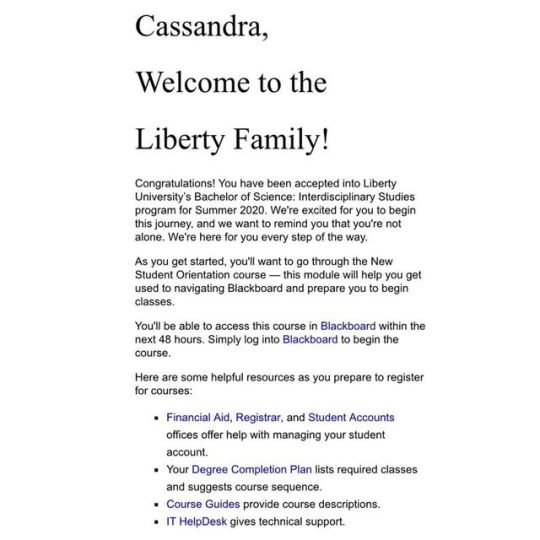
Not my masters yet.... but getting that afterward I take my art classes... I am actually starting in Fall 2020.... #collegestudent #collegeacceptance #libertyuniversity #libertyuniversityonline #interdisciplinarystudies #interdisciplinarystudiesmajor #studioarts #studioartsmajor #graphicdesign #graphicdesignmajor #photography @sade.photography.n.art https://www.instagram.com/p/B0s7JhMjeWe/?igshid=1b8o4qvbi1bv3
#collegestudent#collegeacceptance#libertyuniversity#libertyuniversityonline#interdisciplinarystudies#interdisciplinarystudiesmajor#studioarts#studioartsmajor#graphicdesign#graphicdesignmajor#photography
0 notes
Link
Interdisciplinary Studies to get knowledge about behavior
#utd galaxy#InterdisciplinaryStudies#UtdGalaxy#UtdCoursebook#InterdisciplinaryDefinition#InterdisciplinarySynonym#InterdisciplinaryScience#InterdisciplinaryStudiesDefinition#InterdisciplinaryStudiesJobs#InterdisciplinaryResearch#InterdisciplinaryStudiesUcf#InterdisciplinaryEducation#InterdisciplinaryStudiesDegreeJobs#HealthcareStudiesUtd#InterdisciplinaryStudiesSalary#IsaInterdisciplinaryStudiesDegreeGood#MultiInterdisciplinaryStudies
0 notes
Text
Social Science Classes in Singapore: Kiya Learning social science classes in Singapore offer insights into human behavior, societies, and cultures. Through the study of subjects such as history, geography, and sociology, students develop a holistic understanding of global issues and societal dynamics.Online Social Science classes foster critical thinking and cultural awareness, empowering students to become informed and engaged global citizens.
#SocialScienceClassesSingapore#SingaporeSocialScience#SocialScienceEducation#SocialScienceLearning#SingaporeEducation#SocialScienceCurriculum#SocialSciencePrograms#SocialScienceStudies#SingaporeStudents#SocialScienceResearch#SocialScienceTopics#SocialScienceSkills#SingaporeLearning#SocialScienceTeachers#SocialScienceForKids#SocialScienceForAll#HumanitiesEducation#SingaporeHumanities#InterdisciplinaryStudies
0 notes
Text
Gain insights into human society and culture with Kiya Learning's online social science classes in Singapore. we are aligned with Singapore curriculum standards, our courses cover subjects such as history, geography, sociology, and economics. Join us for interactive sessions and engaging discussions to broaden your knowledge.
#SocialScienceClass#SocialStudies#HistoryClass#GeographyClass#CivicsClass#EconomicsClass#PoliticalScience#Anthropology#SociologyClass#PsychologyClass#SocialScienceEducation#Humanities#GlobalStudies#CulturalStudies#SocialJustice#ResearchMethods#CriticalThinking#PublicPolicy#SocialScienceResearch#InterdisciplinaryStudies
0 notes
Text
Interdisciplinary Project - Evaluation (BAIS300)
For our interdisciplinary project, we thought of many things to do but the one thing that we all agreed would be cool to do was to create a set like it was going to be used in a movie where people can interact with the things inside to make it interesting. At first, we were thinking of making a bedroom that would be completely white with the walls, bed, floor and other objects in the room. However, during the next couple of lectures of coming up with ideas, we settle with the idea that the set will be a living room thats like it's from a sitcom but make it almost creepy as we will be having a tv being live so you can see yourself on tv but also have lots of interactive things inside the set so it can become interactive with the people who have a look.
At first I didn't have a role within the group because I wasn't sure on what I wanted to help with but when helping build the mini structure of our set room, I thought I would help build the set together as I usually don't build a lot as I thought building a set would be fun to do together.
On the 9th of May, we started clearing our space in the warehouse and started putting up the walls for the set. We started this to set our place but also to see how big of the place we get so we knew how to fill up the room inside. While doing this, we also found a sofa with the extra things in the other room and at first, there was two sofas (one being black and another being white) so we messaged the art directors and everyone else who wasn't there at the time as they were doing other things towards the project and they all agreed the black sofa would be better as it would be better for the aesthetic of the room we were going for and it would also fit the creepy theme we were going for. Additionally, me and other people were called up by the tech team to have our photos taken as they wanted to make videos so when it comes to making "family photos" in our set, they will actually be moving instead.
On the 14th of May, all the walls were up by then so it came to starting building the inside of the set. I decided to help build the roof of the room as the art directors wanted a roof to make it more enclosed but as the materials was taking a long time to come, I helped out everyone who was building the floor (or carpet) for the room while waiting. When the carpet was done, we put down the rug we've had since the beginning of building as we were drawing inspiration from it and also put back the sofa and also added in the tv and little objects we already had. By this time the materials for the roof came but it didn't go as we planned as we didn't realise how long the black sheets were so they were draping and covering almost most of the room so we had to take them down and add a long beam at the top in the centre so the black sheets could rest of that so i wasn't draping down anymore.
For the 15th of May, it was mainly making sure the room looked perfect as the team doing all the tech things were adding their makings to the room. My team were going to add the black sheets around the room so the legs behind the walls wouldn't look so out of places but also make the outside of the room creepy so it's all hidden so people would have to look in to see what it was about. However, when trying to staple the sheets, the staple gun had no staples left, so my team went out to Wilkos to get some staples but also the tech team needed some lightbulbs so we got them while out but however, when we got back, we realised we got the wrong staples. So to save time, half of my team went out to get the staples by driving to the places so when they did that, the rest of us started planning where the rest of the sheets would fit. After getting the right staples and having lunch, we stapled all the sheets up and covered everything that was behind the wall and also made a curtain door it make it more creepy. After that, the room was basically done and ready for the show tomorrow.
I was part of the last team to present the work during the show on the 16th of May and my job was to make sure the tablet that was playing the music wasn't going to die and also keep an eye on the tablets inside the room that was playing the "photos" and make sure they don't die. During these hours, we had a lot of people go in and have a look, some people were staying in there for almost half a hour which was surprising but everyone who commented on it to us said it was either "cool" "creepy" or "uncomfortable" which was what we were going for with this project. While having a look myself, I was really happy with the outcome of our team work as at the start there was a lot of unsureness with where we wanted to take this project but seeing all of it come together by everyone's work with building or filming or making the music or creating the VHS spy camera was really amazing.
However, if I was to do this again, I would like to have a go at creating the moving "photos" as they included the glitch effect and I really enjoyed learning how to do that but being able to use the set ourselves to create a Gregory Crewdson photo as well together was really cool.
0 notes
Photo

Today's #SJComix365 is "Fallout: J. Robert Oppenheimer, Leo Szilard, and The Political Science Of The Atomic Bomb" by Jim Ottaviani. It's not every day you see a comic written by someone with a masters degree in nuclear engineering. Jim Ottaviani and GT Labs do great science history comics and 'Fallout' is no exception; it's both an early #graphichistory and scientific crash-course on the bomb, as well as a #graphicbiography of sorts for Oppenheimer and Szilard, who worked on the project together but had very different outlooks. 'Fallout' explores the fundamental politics, science, and moral questions of the nuclear bomb in a stunning comic that can be enjoyed in one sitting. ✨ #comics #graphicnovels #gtlabs #fallout #oppenheimer #szilard #nuclearwar #nuclearhistory #historyofthebomb #atomicwarfare #atomicbomb #atombomb #jimottaviani #comicsfortheclassroom #comicsintheclassroom #interdisciplinarystudies #interdisciplinarycomics #comicsscholarship https://www.instagram.com/p/BvzLaQWgACm/?utm_source=ig_tumblr_share&igshid=jhvbij9qbwef
#sjcomix365#graphichistory#graphicbiography#comics#graphicnovels#gtlabs#fallout#oppenheimer#szilard#nuclearwar#nuclearhistory#historyofthebomb#atomicwarfare#atomicbomb#atombomb#jimottaviani#comicsfortheclassroom#comicsintheclassroom#interdisciplinarystudies#interdisciplinarycomics#comicsscholarship
0 notes
Text
FASHION X ART
After our lecture about fashion and art, I found the food art slide the most interesting. The image we were shown was a makeup artist who had created some eye makeup that looked like a burger and along with lots of clothing that had food items on it. It just appealed to me because it was so eye catching and another project that I’m doing is heavily based on food and cosmetics.
I love how creative it can get, to see more I went onto Pinterest and saw loads of food art and how it had been interpreted in different ways with artists like James Ostrer and Keith Allen Phillips covering people in food and almost making them look like monsters, it’s actually quite terrifying but at the same time it’s quite beautiful with all of the colours they use in their work.
I do think some of them are a bit gross and make me feel a bit uncomfortable but that’s probably because I’ve never actually seen food used in this way or used as a makeup medium.
This is also a very clever way to make people think about the food their eating as I feel like they’re really surreal. They’ve made the food look quite appealing yet really grotesque and disgusting. I think it’s the way all the food clings to the body and is dripping off them, I’d almost go as far to say it’s similar to sweat and how that also drips off of the body.
Overall I feel like food and art are a really good pairing and way you can get creative and I think it’s something we’ll definitely see more of in future trends.



0 notes

